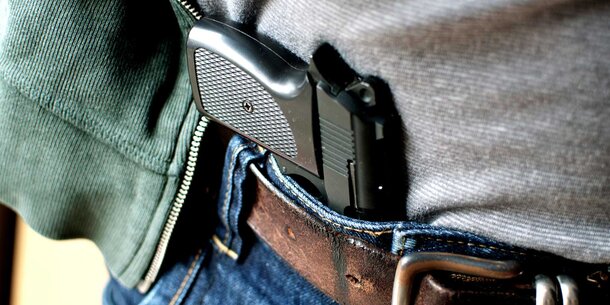You’re reading The Briefing, Michael Waldman’s weekly newsletter. Click here to receive it every week in your inbox.
The 2008 decision in District of Columbia v. Heller was the first time the Supreme Court said that the Second Amendment protects an individual right to gun ownership. But even that decision — reversing 200 years of judicial consensus on the meaning of “keep and bear Arms” — said the United States could still have strong gun laws. In fact, upwards of 90 percent of gun laws were upheld in the decade after Heller.
Justice Antonin Scalia wrote the Heller opinion. He was asked how he differed from Justice Clarence Thomas. “I am an originalist,” he replied. “But I am not a nut.”
And it was Thomas who wrote New York State Rifle & Pistol Association v. Bruen in 2022, by far the most extreme Second Amendment case in the country’s history. It said, in effect, that judges could not take current public safety concerns into consideration when weighing the constitutionality of a gun law — only history and tradition, by asking whether there was an analogous gun law in 1791.
Which brings us to United States v. Rahimi, the case argued before the Supreme Court Tuesday. Zackey Rahimi assaulted the mother of his child. He was placed under a domestic violence restraining order, which triggered a ban on possessing a firearm. After that, he threatened a different woman with a gun, and on five separate occasions he opened fire in public.
Citing Bruen’s “1791 analogue” test, the Fifth Circuit Court of Appeals struck down the law that stripped Rahimi of his right to carry a firearm. Of course, no such law existed at the time of the Second Amendment’s ratification: domestic violence wasn’t even a crime.
At oral argument Tuesday, the justices were at pains to make clear they understood the absurdity of this result. Here’s the pick of the exchanges, between Chief Justice John Roberts and the lawyer for Rahimi.
“You don’t have any doubt that your client’s a dangerous person, do you?”
“Your honor, I would want to know what ‘dangerous person’ means at the moment.”
“Well, it means someone who’s shooting . . . at people. That’s a good start.”
When you’re done chuckling at Roberts’s bon mot, it’s worth remembering that he’s in part responsible for this situation. His votes in Heller and Bruen created the Fifth Circuit’s absurd ruling.
Based on the tenor of the questions, the justices could find a way to rule that of course you can take guns away from domestic abusers. To use the Latin legal phrase, duh. But they should go much further. They could try to find a way to rule that 1791 analogues need not be exact but “close enough.” For example, any founding-era law that took a gun away from a dangerous individual is close enough to a ban on gun possession by people under a domestic violence restraining order.
Or maybe, just maybe, there is a majority to fundamentally rethink the logic of Bruen. After all, Roberts and Brett Kavanaugh both voted for Bruen’s originalist opinion, but they also wrote separately that the real goal was for gun laws to be “objective.” Those two plus the three liberals would make a new majority for a saner approach to firearms regulation.
I’m not holding my breath, though. In case after case, Roberts has shown he wants to head in the same direction as his conservative colleagues, just a bit slower. But the reactionary absurdity of Bruen and its originalism remains. We live in a modern, changing country, one where tens of millions of assault weapons flood our streets, weapons of war unimaginable to the founders. The claim that the social views of those property-owning white men, at a time when women could not vote and Black people were enslaved, should be all that governs us today? That’s a truly “dangerous” idea.



